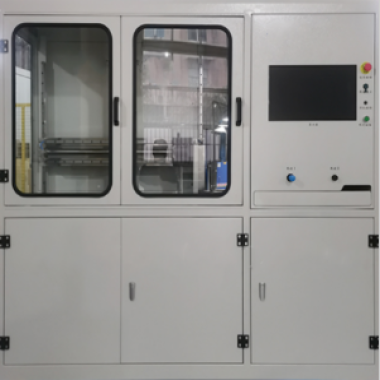Beyond the Dye: Why Formaldehyde Testing is Vital for Textile Safety
Blog 23 5 月, 2025
When you wear clothing or use textile products like bedding, you expect them to be safe. While we often focus on physical properties like strength or colorfastness, the presence of certain chemicals can pose health risks. One such chemical is formaldehyde, which can be used in textile manufacturing processes, for example, as a finishing agent to prevent wrinkles or shrinkage, or it can be present as an impurity. Formaldehyde is a known irritant and potential allergen, and its presence in textiles is strictly regulated in many parts of the world, particularly in items that come into direct contact with the skin.
Ensuring textiles meet these safety standards requires accurate chemical testing. Today, we’re discussing the importance of testing for formaldehyde content and the instrument designed to perform this critical analysis: the Textile Formaldehyde Content Tester.
The Concern with Formaldehyde in Textiles
Formaldehyde is a volatile organic compound that can be released from fabrics over time, especially when exposed to heat or moisture. Exposure can cause:
Skin irritation, rashes, and allergic reactions.
Respiratory problems and eye irritation.
Potential long-term health effects (it’s classified as a probable human carcinogen).
Because of these risks, governments and regulatory bodies worldwide have set limits on the permissible amount of free and hydrolyzed formaldehyde in textile products. Compliance with these regulations, such as the mandatory standards in China (like GB 18401), is not just a legal requirement but a fundamental aspect of consumer safety and product quality.
How Formaldehyde Content is Tested (Water Extraction Method)
One common and widely recognized method for determining formaldehyde content in textiles involves water extraction. This process aims to extract the “free” formaldehyde and formaldehyde that can be easily hydrolyzed from the fabric into a water solution.
Here’s the basic principle of the method supported by our tester (aligned with standards like GB/T 2912.1):
A textile specimen is placed in water under controlled conditions (temperature, time).
Any free or easily hydrolyzable formaldehyde is released from the fabric into the water, creating a formaldehyde solution.
A specific chemical reagent, like Nessler reagent, is added to the formaldehyde solution. This reagent reacts with formaldehyde to produce a colored compound.
The intensity of the color developed is directly proportional to the concentration of formaldehyde in the solution.
A spectrophotometer is used to measure the absorbance or transmittance of light through the colored solution at a specific wavelength. By comparing the measured absorbance to a calibration curve (established using solutions of known formaldehyde concentrations), the software can calculate the formaldehyde content in the original textile sample.
Introducing the Textile Formaldehyde Content Tester: A Precise Spectrophotometer
Our Textile Formaldehyde Content Tester is essentially a specialized spectrophotometer optimized for performing this type of colorimetric analysis on textile extracts. It’s designed to provide accurate, reliable, and efficient measurements of formaldehyde content to ensure compliance with safety standards.
Key features and technical parameters highlight its capabilities:
Accurate Colorimetric Measurement: The instrument operates over a wavelength range of 190-1000nm, covering the necessary visible and UV spectrum for the color reaction. With fine wavelength accuracy (±1nm) and repeatability (≤0.3nm), and high photometric accuracy (±0.5% T) and repeatability (≤0.2% T), it precisely measures the color intensity produced by the reaction, crucial for accurate concentration determination.
User-Friendly Interface: Features a 128*64-bit large-screen LCD display for clear readings and easy navigation.
Data Management: Can continuously test and store 200 sets of data and store 200 standard curves, which is essential for routine testing and maintaining historical records. Stored data is protected by a power-off function.
Flexible Calibration: Supports both Standard Curve Method (C mode), allowing direct creation and use of multi-point curves, and Coefficient Method (F mode), enabling direct input of curve equations.
Automated Functions: Offers automatic wavelength calibration, setting, and self-repair deviation, simplifying setup and ensuring measurement accuracy.
Easy Maintenance: Features a convenient socket-type deuterium lamp and tungsten lamp design, allowing for easy light source replacement without requiring complex optical debugging.
Connectivity: Equipped with a standard USB data output interface and a parallel print output interface for seamless connection to a computer for online operation, data processing, and printing reports.
Dedicated Software: Comes with matching quantitative software specifically designed for photometric analysis and quantitative testing of formaldehyde, streamlining the data analysis process and facilitating the generation of standard reports.
Adherence to Safety Standards:
Our tester is built to enable testing methods recognized by key textile safety standards. It is directly applicable to methods like GB/T 2912.1. which uses the water extraction method. While other standards like AATCC 112. BS 6806. and DIN EN ISO 14184.2 are mentioned (which often utilize vapor absorption methods), our instrument is specifically suited for the water extraction and spectrophotometric analysis principle. Compliance with these standards is vital for manufacturers distributing textiles globally, especially in markets with strict chemical regulations like China, where standards like GB 18401 are mandatory for textile products.
Conclusion: Ensuring Safety in Every Thread
Formaldehyde is a chemical that requires careful monitoring in textile products to protect consumer health. The Textile Formaldehyde Content Tester, utilizing precise spectrophotometry after water extraction, provides manufacturers and testing laboratories with a reliable and efficient tool to accurately determine formaldehyde levels. By adhering to relevant standards like GB/T 2912.1 and leveraging the advanced features of this instrument, the textile industry can ensure that its products meet stringent safety regulations, providing consumers with confidence in the safety of the fabrics they encounter every day.


